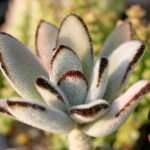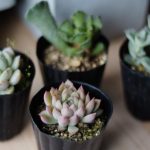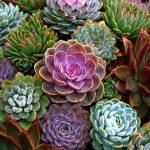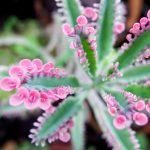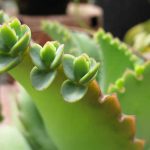Dive into the realm of unique succulents with the mesmerizing Kalanchoe ‘Dragonfire’! Discover crucial insights and expert tips from horticultural pro Melissa Strauss on cultivating and caring for these exquisite plants.
Unveil the charm of Kalanchoe ‘Dragonfire’ – a rapid-growing, vividly colorful succulent delight. Its vibrant apple-green foliage with striking red edges is captivating, growing in compact clusters with unwavering vigor.
Despite their arresting beauty, caring for these plants is surprisingly undemanding. They flourish effortlessly with minimal attention, thriving in a variety of indoor environments when provided with the appropriate care.
Reaching a modest height of a mere 6 inches, Kalanchoe ‘Dragonfire’ graces windowsills and tabletops splendidly. With optimal conditions, this hybrid gem is sure to secure a special place among your cherished plant collection. Read ahead for guidance on planting, nurturing, and tending to these captivating succulents.
Insights into Kalanchoe ‘Dragonfire’ Plants
|
Plant Type
Succulent
Season
Winter and Spring
Family
Crassulaceae
Genus
Kalanchoe
Hardiness Zones
8-10 (Houseplants elsewhere)
Exposure
Full Sun |
Watering Needs
Low
Plant Spacing
Height
4-6 inches
Maintenance
Low
Planting Depth
Surface Level
Soil Type
Well-Draining, Sandy
Native Area
Madagascar
Plant With
Succulents
Diseases
Fungal Root Rot, Powdery Mildew
Attracts
Hummingbirds, Bees, Butterflies
Pests
Scale, Mealybugs, Spider Mites
Foliage Color
Red and Green About Kalanchoe ‘Dragonfire’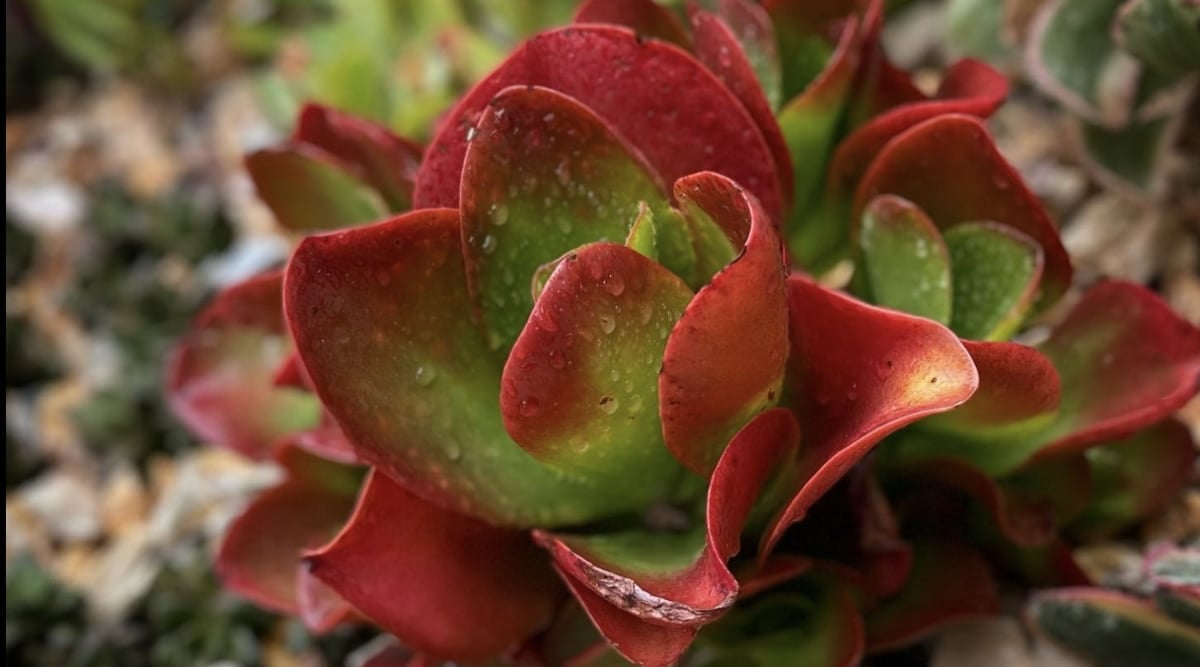  Photo by @magnificadesigns Kalanchoe ‘Dragonfire’ emerged as a novel kalanchoe cultivar from the cross-pollination between K. luciae and an undisclosed hybrid species, originating in California back in 2015. With its proven ability to reproduce asexually over time, Kalanchoe ‘Dragonfire’ has established itself as a durable and visually appealing cultivar. Renowned for its vibrant apple green leaves adorned with vivid red margins, this kalanchoe swiftly multiplies through offsets from an early age, rapidly filling containers with its clumping effect, outpacing its parent plants. While primarily native to Madagascar, kalanchoe plants have gained popularity as household plants, especially prized for their enduring, winter-blooming succulent flowers. These plants are lauded for their resilience and simple propagation, making them ideal for beginners in succulent gardening. Classification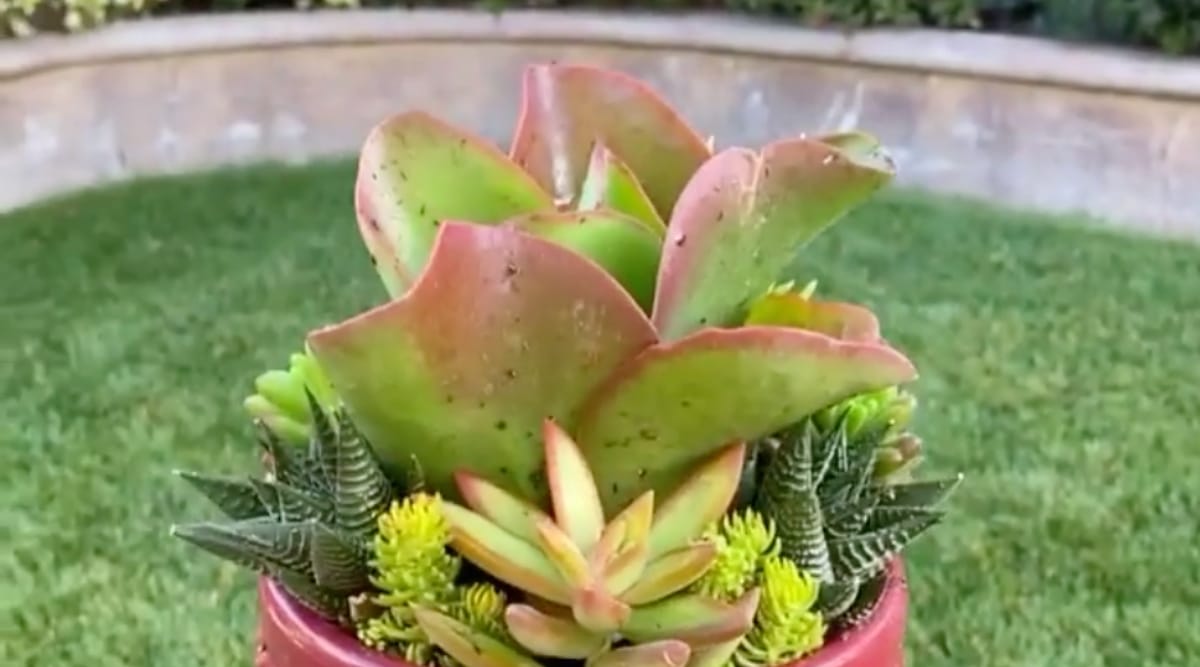  Photo by @thesmashingsucculents As a hybrid species of the Kalanchoe genus, Dragonfire stands out among the 250+ kalanchoe species and numerous hybrids due to its popularity for breeding and hybridization. It is classified as a single-variety hybrid and, as a perennial succulent, it can flourish for several years, blooming annually under optimal conditions, though indoor blooming is less common. Leaf Formation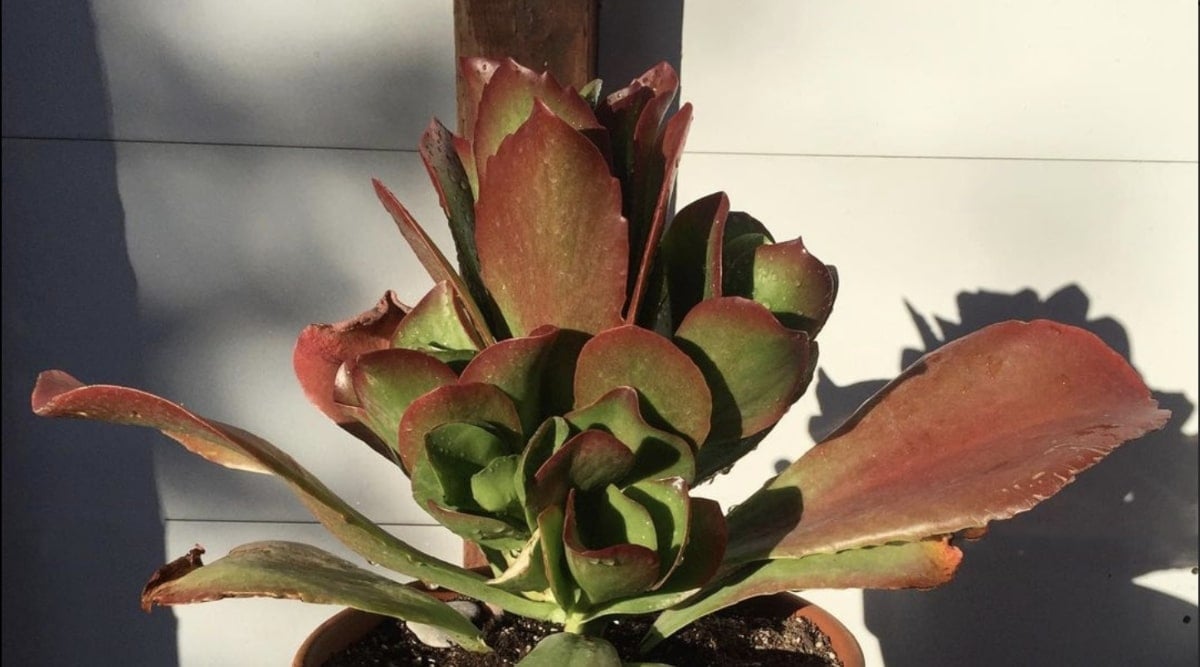  Photo by @devoted.rosette Kalanchoe ‘Dragonfire’ is celebrated for its vividly colored leaves that are oblong and delicately tapered, arranged in a loose rosette fashion, radiating apple green at the core with striking red margins that intensify and expand under temperature stress. While resembling the larger Flapjacks variety, Dragonfire distinguishes itself by reaching a modest height of around 6 inches at maturity, boasting pointed leaf tips instead of rounded ones, which adds to its appeal as a compact and manageable indoor plant. Flowers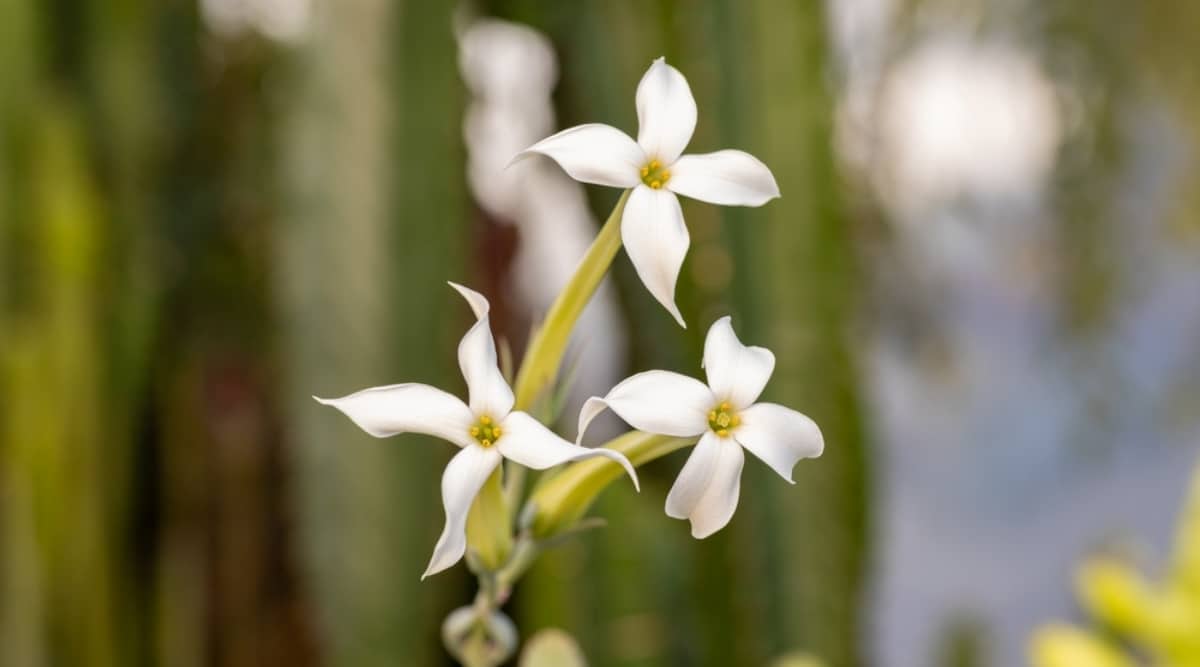  For the Dragonfire species, flowering is not its primary feature, but sporadic blooming does occur. Unlike some vibrant kalanchoe varieties, Dragonfire’s blooms are subtle. However, with ample light, these delicate and charming flowers do emerge. The inflorescence of Dragonfire presents a cluster of green buds that gradually unfold into exquisite white blossoms with a star-like appearance. This blooming period from winter to spring adds a touch of warmth to any collection of houseplants, especially during colder months. Distinctively, Dragonfire repeatedly blooms from the same plant, showcasing its durability and longevity even after flowering. Propagation  Propagation of kalanchoes is notably trouble-free. In their natural habitats, they tend to spread rapidly, producing offsets abundantly and potentially overcrowding other plants. The three common propagation techniques for kalanchoes are through offsets, cuttings, and seeds. From Offsets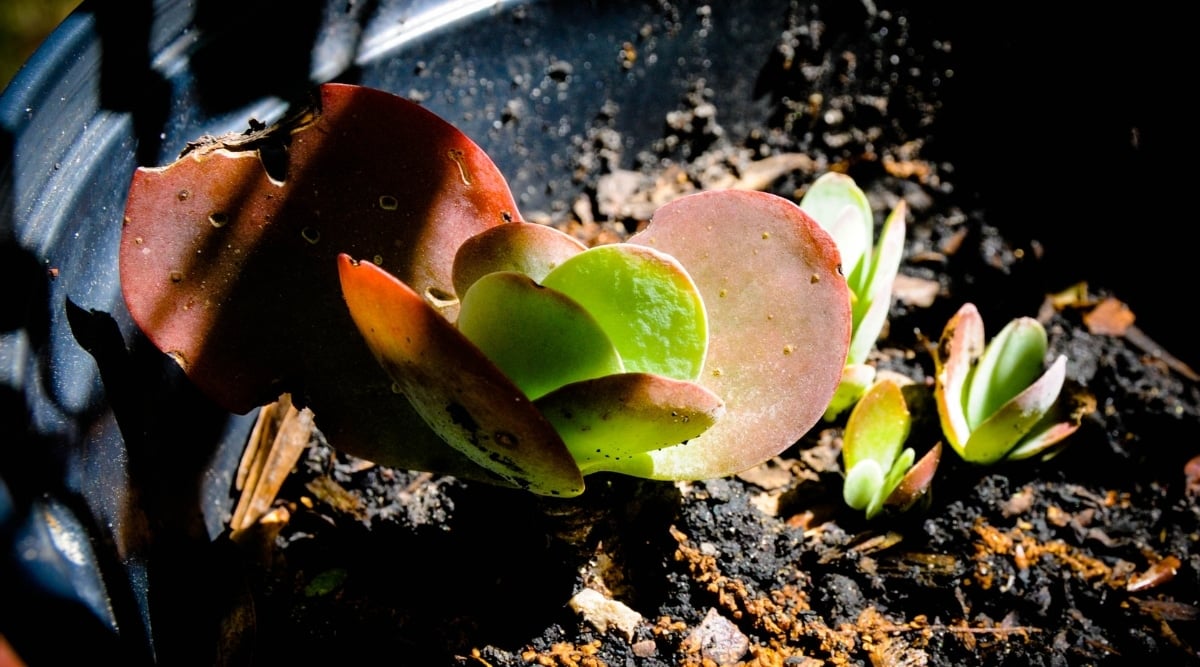  Offset propagation is the easiest method for kalanchoes. Dragonfire, in particular, generates offsets prolifically at an early stage. These offsets, if left unattended, can form a beautiful cluster of colorful rosettes. However, if unchecked, they might become invasive and spread to nearby planters. Removing and repotting these offsets is straightforward – just cut them off from the parent plant and plant them in succulent potting mix. From Cuttings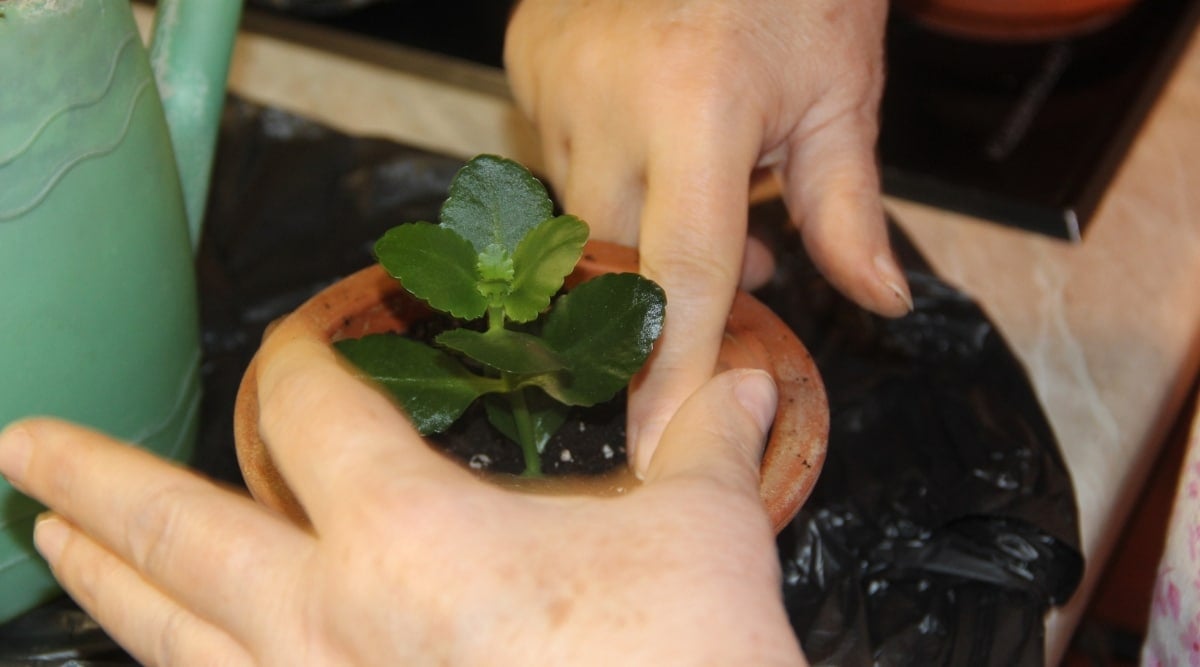  Similar to offset propagation, Dragonfire can also be propagated through leaf cuttings. These cuttings don’t require water for propagation. Simply cut mature leaves from the base of the plant, let the end dry for one day, then plant it in moist potting mix. Rooting hormone can expedite the rooting process, and a clear plastic bag can be used to maintain humidity around the cutting for successful propagation. To ensure successful propagation, covering the cutting with plastic is an effective method. The plastic acts as a mini greenhouse, retaining moisture essential for root development. Within weeks, the cutting should start rooting. Starting from Seeds Growing Kalanchoe from seeds demands time but is straightforward. It’s best to sow the seeds in moist potting soil during spring. No need to bury the seeds; simply surface sow them in a container. Cover the container with a plastic bag and place it in a sunny location. Seed germination typically occurs within 1-2 weeks. Seedlings should be ready for individual pots within two months. Winter planting is challenging due to limited daylight, making mid-spring ideal for starting your Kalanchoe seedlings. Cultivating Kalanchoe ‘Dragonfire’ Image credited to @thesmashingsucculents Kalanchoe Dragonfires are low-maintenance succulents that prefer typical succulent care. They grow quickly and may require thinning to prevent overcrowding in the container, making them perfect space-fillers. With a rapid reproduction rate, regular thinning is necessary to prevent them from taking over the container, ideal for those wanting to fill empty spaces. Planting Depth and Potting Medium Kalanchoes aren’t finicky about their potting requirements—opt for well-draining soil mixes with materials like peat moss and perlite. They fare well in a standard tropical potting mix with larger particles aiding drainage. When potting seeds or plantlets, place them on the soil surface; no need to cover them. For mature plants, plant to the depth of the root ball. Repot every few years as Kalanchoes draw nutrients from the soil they are planted in. Light Requirements  Dragonfire, like many kalanchoes, thrives in bright, filtered light. This succulent species can showcase its stress by changing color, with red edges appearing on the leaves when exposed to excessive sunlight or cooler temperatures. This change in coloration indicates a positive response to stress rather than harm. Kalanchoes, including Dragonfire, tend to exhibit enhanced aesthetics when subjected to stresses like temperature fluctuations or intense sunlight exposure. If you observe bleached leaves on your Dragonfire, it signifies excessive sun exposure. In such cases, consider relocating the plant to a shaded area or providing a light filter like a sheer curtain. Water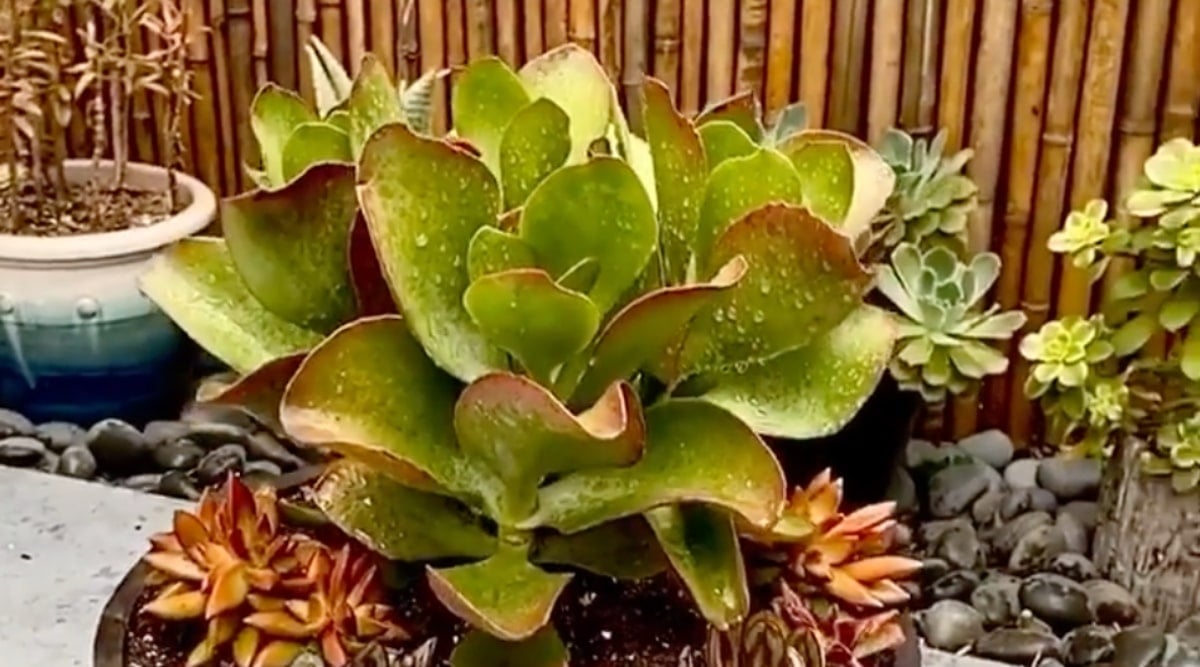  Image courtesy of @thesmashingsucculents Proper drainage in pots is essential to prevent overwatering Dragonfire and other kalanchoes. These succulents prefer dry roots and are prone to root rot if left in soggy soil. Adjust watering frequency to seasonal changes; less water during spring and fall, a slight increase during summer. An individual Dragonfire plant requires about 6 ounces of water every 9-10 days in indirect sunlight. Increase watering to once a week if the plant receives ample sunlight. Outdoor kalanchoes may need additional water, so monitor the soil moisture levels to prevent waterlogging. Allow the soil to dry out between watering sessions, ranging from 2 to 10 days depending on sunlight exposure. Climate and Temperature  Image courtesy of @thesmashingsucculents Dragonfire kalanchoes thrive in indoor temperatures around 65°F, with outdoor tolerances down to 45°F. Temperatures below 45°F risk leaf damage, necessitating indoor protection. These succulents cannot withstand frost and may die off in freezing conditions. However, they exhibit resilience and can regrow after frost exposure, highlighting their adaptability. Kalanchoes can withstand lower humidity levels compared to other indoor plants. Although they survive at 40-50% humidity, an ideal range of 50-60% promotes healthy foliage. Excessive humidity may lead to issues like leaf spot and rot. FertilizingIt is noteworthy that Kalanchoe plants, like the Dragonfire variety, have a remarkable ability to thrive without excessive fertilization. During periods of low growth activity, abstain from fertilizing altogether. Optional feeding with a common fertilizer once a month is ideal during the plant’s growth phase, but remember, it is not a necessity for the plant’s well-being. Dragonfire can thrive beautifully without any additional fertilization. Pruning and MaintenanceBy trimming spent flowers and top leaves after flowering, you can curb Dragonfire’s tendency to become leggy, stimulating healthier growth. Pruning also enhances air circulation among its foliage, minimizing the risk of root rot and leaf decay. Remove any withered or damaged leaves promptly as they can signify underlying issues that need attention. Regular inspections and maintenance will ensure the plant’s health and vitality. ToxicityRemember that Kalanchoe plants, including Dragonfire, contain cardiac glycosides that pose health risks if ingested by people or animals. While rare, adverse effects are more probable in livestock during extreme conditions. Pests and DiseasesWhile generally sturdy, Kalanchoes can still face challenges such as pest infestations, primarily through introducing infected plants. It is advisable to closely inspect new plants for signs of pests or diseases before introducing them into your indoor garden space. Scale  Spotting minuscule brown insects on your plants may indicate a scale infestation. These pests feed on plant sap, particularly targeting new growth, leading to shriveled, dehydrated, pale plant parts. Addressing scale infestations promptly is crucial due to their rapid reproduction and potential for significant damage. Look for clusters of scales under leaves as they tend to gather there. Isolating infested plants is essential to prevent spreading. Treatment typically involves using neem or horticultural oils to suffocate the scales. Directly apply these oils to the affected leaves. Mealybugs  Mealybugs, pale, fuzzy insects, thrive on your kalanchoes’ sap, leaving behind sticky honeydew that can lead to mold. To combat them, rinse with water or use alcohol-soaked cotton swabs for advanced infestations. Prevention is key with mealybugs; inspect new plants for clustered bugs on stems and leaf junctures. Spider Mites  Spider mites resemble tiny dirt specks and lay eggs on plant leaves, causing fine webbing and leaf damage. To detect them, wipe leaves with a cloth after spraying water underneath. Combat spider mites with miticides and regulate humidity to discourage their presence without creating additional plant problems. Fungal Root Rot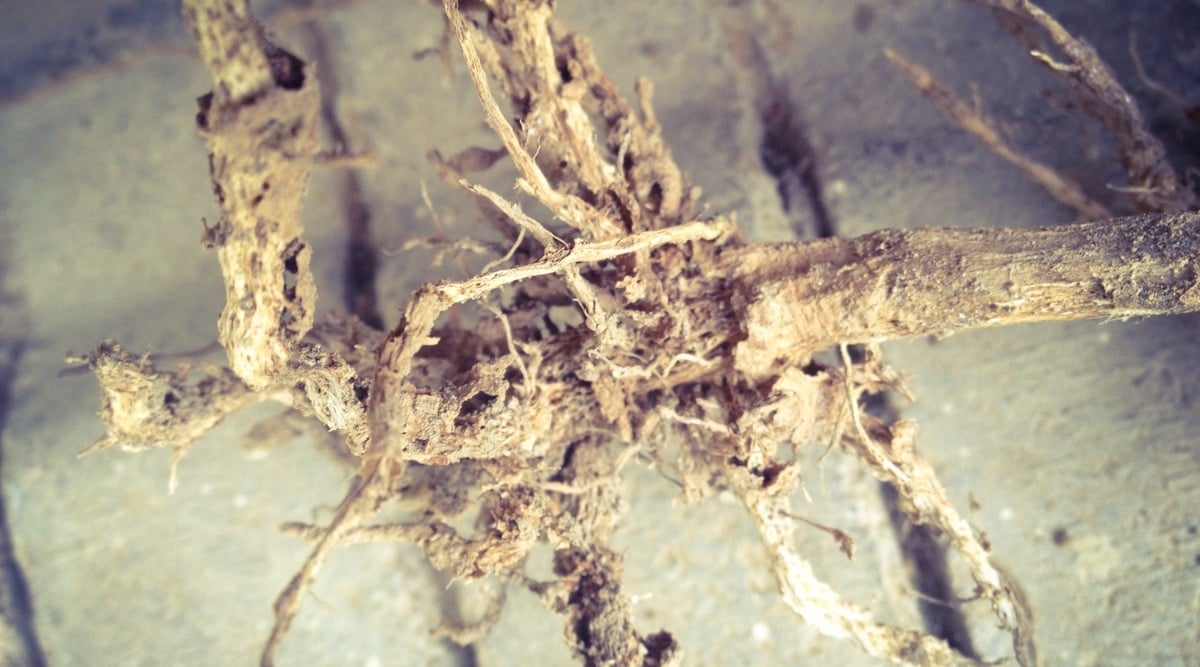  Fungal root rot, also known as Black Rot, is a prevalent disease that causes root decay and growth stunting, potentially leading to plant demise if left untreated. This issue worsens in cool, moist conditions, appearing as a black stem and leaf die-off. Proper watering practices and using benzimidazole fungicide can combat this disease. If root infection is severe, disposal of the plant may be necessary to prevent spread. Powdery Mildew  Mildew can harm succulents like Dragonfire, usually due to excessive humidity rather than over-watering. It isn’t a severe threat but can persist if conditions remain unchanged. To prevent powdery mildew, place kalanchoes in well-lit rooms, avoiding high-humidity spaces like bathrooms. A lower humidity level is ideal for these plants. Bacterial Soft Rot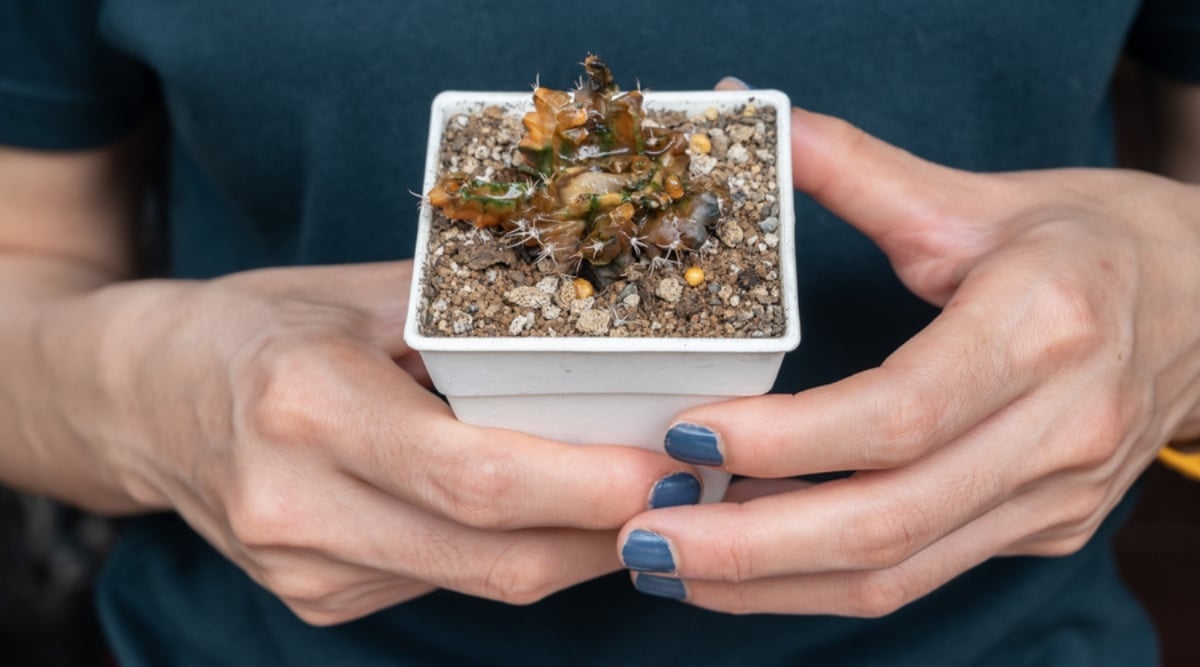  Bacterial soft rot, while less severe than fungal rot, must be addressed promptly. The plant’s fleshy parts are the first to decay as the bacteria feast on them. Infected sections should be removed immediately to prevent spread. Although this condition can’t be cured, it’s uncommon and not a major concern for most gardeners. Final ThoughtsDragonfire Kalanchoe is a resilient succulent that adds vibrancy to any collection. With minimal care requirements, this hardy plant resists pests and diseases, making it suitable for both beginners and experienced gardeners. Offering colorful foliage with just sunlight and bi-monthly watering, the Dragonfire Kalanchoe promises years of beauty and ease of care. Latest posts by JAMES (see all) |


